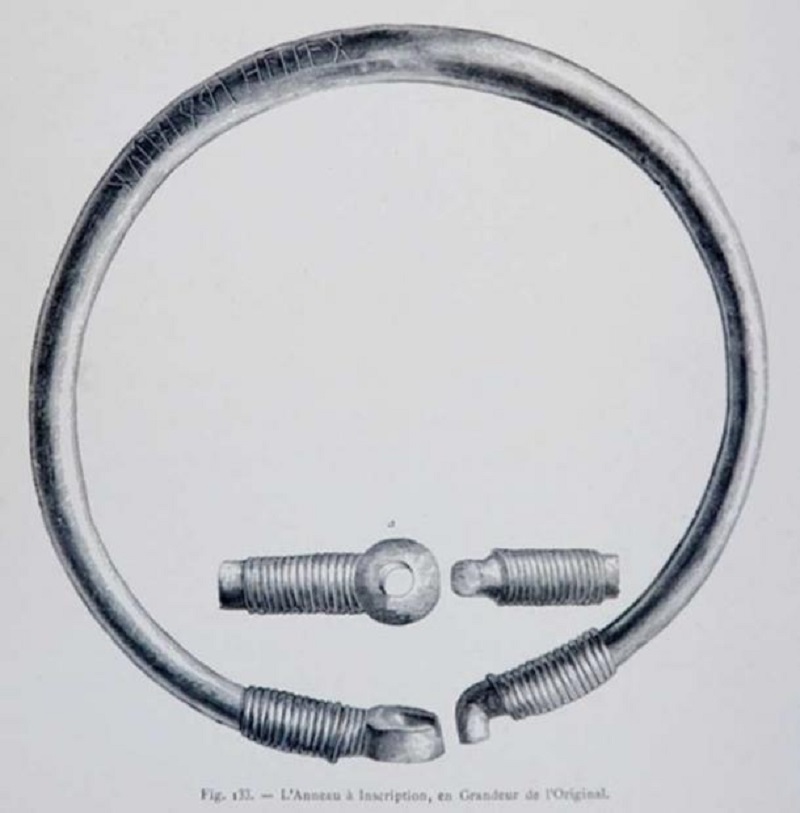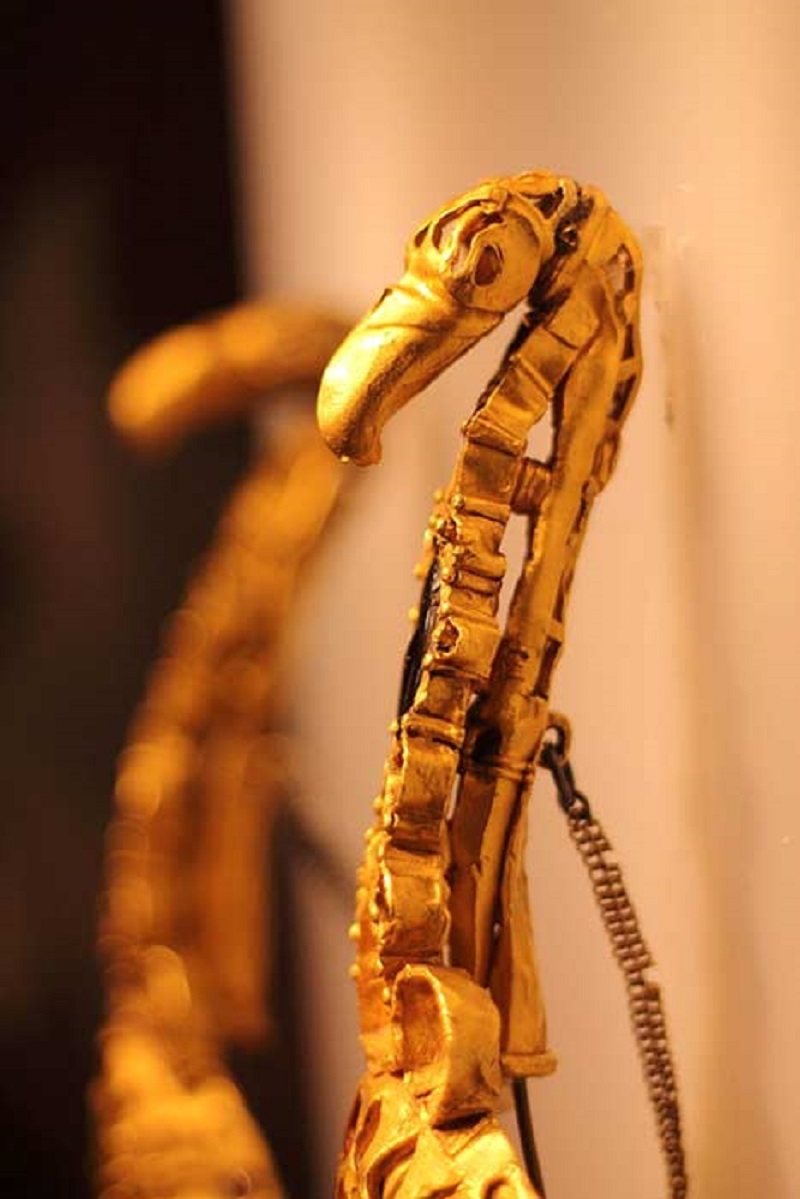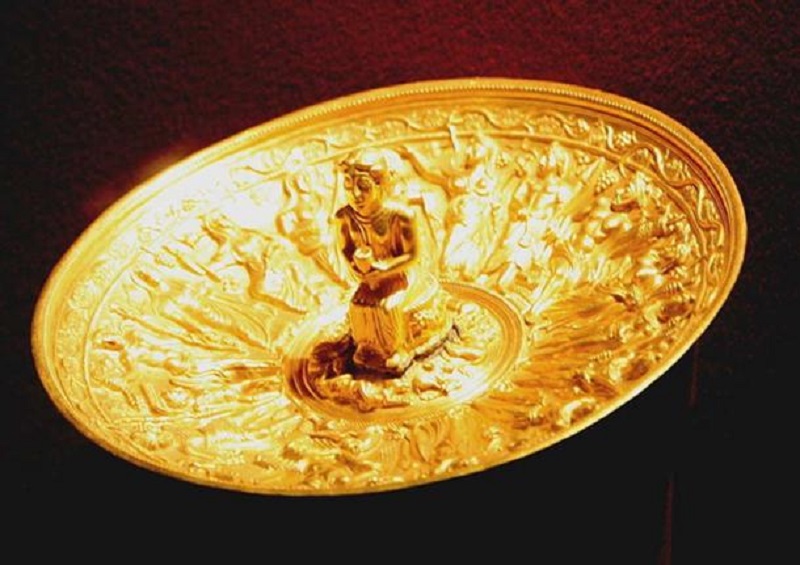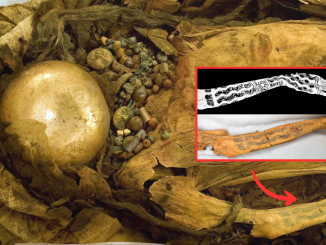The Pietroasele Treasure is the name given to a treasure trove of gold artifacts discovered in the 19th century. These precious objects were discovered in an ancient tomb in Pietroasele, Buzău County, Romania. Gold artifacts date from the Gothic period, especially from the late 4th to mid-5th centuries AD. One factor that contributes to the importance of the Pietroasele Treasure is that its objects allow us to gain some insight into Gothic society during that time period. For example, the Ring of Pietroasele (also known as the Buzău torch) was discovered to contain runic inscriptions, which shed light on the pre-Christian religious beliefs of the Goths.
According to some sources, in 1837, two farmers in the village of Pietroasele, Ion Lemnaru and his father-in-law, Stan Avram, were cutting limestone in a quarry to build a bridge. While doing so, the two men discovered a treasure trove of 22 gold artifacts. In addition to the Ring of Pietroasele, other notable objects in the Pietroasele Treasure include a patera (a shallow bowl used to pour wine), a large fibula with an eagle’s head (a brooch or pin used to fasten clothing) set with semi-precious stones, and a twelve-sided cup.
The fibule in the middle is shaped like an eagle, worn in pairs by Gothic women (CC BY-SA 3.0)
It was reported that two farmers kept the gold and sold it to an Albanian merchant. One of the things this merchant did when he bought the treasure was to break some objects into smaller pieces to sell without being detected by the authorities. Only a year later, in 1838, information about this treasure reached the authorities and the artifacts were seized. However, of the original 22 pieces, only 12 were salvaged. Today, the Pietroasele Treasure is kept in the National History Museum of Romania in Bucharest.

National Museum of Romanian History ( CC BY-SA 3.0 ro )
It is said that, according to earlier views, the Pietroasele Treasure was linked to the Huns’ overthrow of the Goths in the area around 370 AD. However, today this date is considered premature and it is generally accepted that the objects were accumulated between the late 4th and early 5th centuries AD, then buried around middle of the next century. Some believe that the treasure once belonged to Athanaric, a leader of the Gothic Tervingi tribe who lived in the 4th century AD.
Analyzes of gold objects have provided insight into the lives of the Goths during that period of their history. For example, some images can be seen on the patera. These figures wear Greek costumes, are believed to be Gothic gods, and surround a female figure, believed to represent the goddess of fertility. For example, one of these gods is depicted holding a staff and a cornucopia, and at first glance can be identified as Heracles. Upon closer inspection, one can realize that this god sits on a throne shaped like a horse’s head, suggesting that he is most likely Donar, a Germanic god. However, other metrics are more difficult to determine.
Yellow Patera ( CC BY 3.0 )
In addition to artistic representations of gods, Gothic religious beliefs can also be seen in other aspects of the treasure. The inscriptions on the Ring of Pietroasele are one such example. This necklace (also known as the torus) contains runic symbols, identified as belonging to the Elder Futhark alphabet. While scholars have attempted to translate the inscription on the ring, there is still no consensus on its meaning. However, it has been suggested that the rune was intended to provide some kind of magical protection to its wearer.

Drawing of Pietroasele’s ring. (Public domain)
Top images: Eagle shaped fibula ( CC BY 3.0 ) Golden Patera ( CC BY 3.0 ), middle fibula shaped like an eagle, worn in pairs by Gothic women ( CC BY-SA 3.0 ),




